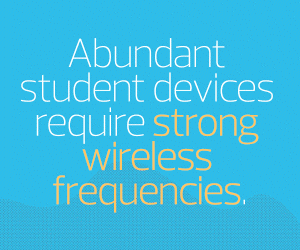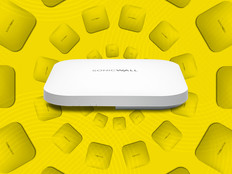Are Wi-Fi 7 Access Points Backward Compatible?
Wi-Fi 7 access points are already available to enterprises and educational institutions, and high-end laptops and phones, such as the Samsung Galaxy S24 Ultra, are starting to support the standard. Educational institutions “aren’t likely to see large numbers of students with devices that support the new standard for a while, but because Wi-Fi 7 is backward compatible, a school can choose to upgrade to the new standard if its current equipment needs to be replaced or if it has new use case requirements,” says Morgan.
For schools already operating on Wi-Fi 6E, upgrading to Wi-Fi 7 will not yield as large a gain as when upgrading from Wi-Fi 6 or previous generations to Wi-Fi 7. However, each standard is backward compatible, so schools could operate a mixed network; say, a combination of Wi-Fi 7 and Wi-Fi 6. This may create a few issues, Morgan says, including a brief loss of connectivity when users move from a connection in the 6GHz band to an older band. Schools will also have to work to ensure tight security across mixed standards.
WATCH: Network upgrades connect students to immersive experiences.
How Schools Can Plan for Wi-Fi 7 Today
Some schools still haven’t made the leap to Wi-Fi 6. For them, Morgan says, upgrading to Wi-Fi 7 is the best bet. “This will give them the longest equipment life and the best student experience in the future, once Wi-Fi 7 becomes more widely available on laptops and smartphones.”
However, if schools cannot find the Wi-Fi 7 APs they prefer, Morgan says, “they should upgrade to Wi-Fi 6E because that will give them the huge benefit of the added 6GHz spectrum.”
On the other hand, says Amy McLaughlin, project director at Consortium of School Networking, schools shouldn't consider any “abrupt leaps” just yet; instead, they should plan for changes brought about by Wi-Fi 6E. For example, in districts that require network authentication of individual devices, rather than using a shared wireless key to connect, 6E will require devices to be authenticated with their own security certificates.
“It will be a couple of years before the devices catch up to the capabilities of these new access points,” says McLaughlin.










